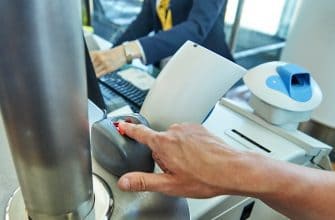The immigration rules in Appendix FM contain a financial requirement for a person applying for a UK Partner Visa.
These rules are in place to ensure that the family’s financial position is strong and to avoid the need to claim state benefits.
Minimum Income Threshold
First, you must work out how much you will need to earn in order to meet the financial requirement.
The minimum income for the financial requirement will depend on your family situation.
More specifically, it will largely depend on whether there will be any dependent children applying at the same time.
The Minimum Income for Applicants with No Financial Dependents
When applying for a UK Partner Visa without a financial dependent, the financial regulations are as follows:
The UK partner must have an annual income of at least £18,600.
Alternatively, cash savings of £62,500 will be enough to meet the financial requirement.
Savings under £62,500 can also be used to counteract the annual income requirement, which provides people earning under £18,600 the opportunity to still pass this part of the application requirement.
To learn more about cash savings and the rules on combining income and savings please read our “Cash Savings” guide.
The final option is that the UK partner receives any of the following benefits:
- Armed Forces Independence Payment or Guaranteed Income Payment under the Armed Forces Compensation Scheme;
- Attendance Allowance;
- Carer’s Allowance;
- Constant Attendance Allowance, Mobility Supplement or War Disablement Pension under the War Pensions Scheme;
- Disability Living Allowance;
- Industrial Injury Disablement Benefit;
- Personal Independence Payment;
- or Severe Disablement Allowance.
The Minimum Income for Applicants with Financial Dependents
When the applicant has dependent children that are UK or EEA nationals with the right to remain, the same minimum income amounts as above are in place.
However, if the child dependent is not a UK or EEA citizen, an additional gross annual income of £3,800 is required for the first child sponsored in addition to the partner and £2,400 for each further child.
| Children | Minimum Income Threshold |
| 0 | £18,600 |
| 1 | £22,400 |
| 2 | £24,800 |
| 3 | £27,200 |
Sources of Income
If the visa application is being made from OUTSIDE the UK, then only the UK Partners income can be included.
If the visa application is being made from INSIDE the UK then both the applicant and the UK partners income can be counted towards the financial requirement, providing the applicant has the right to work in the UK.
The applicant does not have to meet the financial requirement, if the UK partner meets the financial requirement alone then this will be enough.
| Visa | Income Included |
| Spouse Visa | UK Partner only |
| Fiance Visa | UK Partner only |
| FLR M Visa | Both |
| Unmarried Partner Visa (Inside UK) | Both |
| Unmarried Partner Visa (Outside UK) | UK Partner only |
Here are the sources of income which can be used to meet the financial requirement.
Employment Income can be salaried or non-salaried.
Salaried employment includes that paid at a minimum fixed rate (usually annual) which is usually subject to a contractual minimum number of hours to be worked.
Non-salaried employment includes that paid at an hourly or other rate (and the number and/or pattern of hours required to be worked may vary) or paid an amount which varies according to the work undertaken.
Here are the various ways income from employment can be counted towards the financial requirement of your visa application.
Employed in the UK
Income from employment can be used to meet the financial requirement if:
- working in the UK
- working for 6 months or more for the same employer
Employed Abroad (NOT in the UK)
If the Sponsor is returning to the UK with their partner then employment income can be used to meet the financial requirement providing:
- they have been working for the same employer for the past six months
- they have a job offer for employment in the UK which starts within 3 months of them returning to the UK
- the income from this job is equal to or above the minimum income threshold
For salaried employment, the salary should be the same or more than their minimum income requirement for the six month period.
For non-salaried employment, it is slightly more complicated so we have included an example to help clarify things.
For salaried employment, the salary should be the same or more than their minimum income requirement for the six month period.
For non-salaried employment, annual income is calculated in the following steps:
- Step 1: Add up the gross income received in the last 6 months
- Step 2: Divide this by 6 in order to get a monthly average
- Step 3: Multiply this monthly average by 12 in order to get an annual average
If income from employment is below the required minimum income threshold then this can be combined with non-employment income, cash savings or pension income in order to meet the minimum income requirement.
Employment Income can be salaried or non-salaried.
Salaried employment includes that paid at a minimum fixed rate (usually annual) which is usually subject to a contractual minimum number of hours to be worked.
Non-salaried employment includes that paid at an hourly or other rate (and the number and/or pattern of hours required to be worked may vary) or paid an amount which varies according to the work undertaken.
Employed in the UK
Income from employment can be used to meet the financial requirement if the sponsor has not been in the same employment for at least 6 months or on a variable income.
Returning to the UK with partner
The sponsor does not need to be employed but needs to have:
- a job offer starting within three months of their return,
- with a gross annual starting salary (or in non-salaried employment a gross annual income from that employment) equal to or above the required threshold; and
- received a gross amount of salaried or non-salaried employment income overseas equal or above the required threshold, in the 12 months preceding the application.
Calculating Annual Income
Annual income must be calculated in the following 2 ways:
Gross Annual Income or Salary at the date of application
If in salaried employment this will be the gross annual salary when you make the application.
If in non-salaried employment, the calculation is explained in the example below.
- Step 1: Add up the gross income received in the time Sponsor has been doing that job
- Step 2: Divide this by the number of months you have received this income in order to get a monthly average
- Step 3: Multiply this monthly average by 12 in order to get an annual average
Actual income or salary received in the 12 months prior to the application
Calculate actual income (from salaried or non-salaried employment) in the 12 months preceding the application.
If in salaried employment you must count your annual gross salary and if your employment is non-salaried you will add up your total income.
Your income should be above the minimum income threshold from both calculations
Click here to see what employment documents you would need to provide for your visa application
The following non-employment income can be counted to meet the financial requirement providing this income has been received within 12 months of the visa application.
- Property rental income
- Interest from savings
- UK Maternity Allowance, Bereavement Payment, Bereavement Allowance and Widowed Parent’s Allowance
- Payments under the War Pensions Scheme, the Armed Forces Attributable Benefits Scheme and the Armed Forces Compensation Scheme
- Ongoing payments from a structured legal settlement
- Ongoing insurance payments
- Ongoing payments from a structured legal settlement
- A maintenance grant or stipend (not a loan) associated with undergraduate study or postgraduate study or research
- Maintenance payments from a former partner of the applicant in relation to the applicant or any children of the applicant and their former partner. Also, maintenance payments from a former partner of the applicant’s partner in relation to that partner
- Dividends or other income from investments, stocks and shares, bonds or trust funds. (Dividends can only be counted in this category if the company the dividends are drawn from is not a “specified limited company”.
- To see what a “specified limited company” is go to Number 6: Director or an Employee of a “specified limited company”)
Cash Savings is money which is in a current, deposit or investment account provided by a regulated financial institution in the UK or abroad. Cash Savings will not count where the money is not readily accessible. So, money which cannot be immediately withdrawn, like a pension fund, will not count.
Cash savings must be
- over £16,000, anything below this will not be counted.
- held for at least 6 months
- in the name of the sponsor and/or applicant
- from a legal source
For a more detailed guide on how to use Cash Savings to meet the financial requirement, check out our Cash Savings guide here.
If you or your partner receive a state pension (UK or foreign), private pension or an occupational pension then the gross annual income of this can be used to meet the financial requirement. You must be receiving this pension for at least 28 days before you make your visa application. Pension income can be combined with employment income, non-employment income and cash savings.
Click here to see what pension income documents you would need to provide for your visa application
In the UK, a financial year runs from 6 April to 5 April the next year but this may be different in other countries.
Evidence of self-employment income can be used from
- the last full financial year or
- the average from the last two financial years
The income will be the gross taxable profits from their share of the business in the relevant financial year(s). This will not include any expenses, liabilities or deductable allowances, which may be applied to establish the final tax liability.
Click here to see what self-employment documents you would need to provide for your visa application
Limited companies are owned by its shareholders.
If a shareholder is also a director of the company then they may receive dividends in which case they can use non-employment income to show that they meet the financial requirement.
If a shareholder is also an employee of the company then they will receive a salary in which case they can use employment income to show that they meet the financial requirement.
However, if you are a director or an employee of a “specified limited company” in the UK, then the evidence you need to provide in order to show you meet the financial requirement will be different.
A “specified limited company” is defined in Paragraph 9(a) of Appendix FM-SE.
Click here to see what documents you would need to provide for your visa application
The Home Office have a policy that removes the financial requirement for those on a permitted benefit.
If you receive any of the following benefits then you do not have to meet the financial requirement.
- Disability Living Allowance;
- Personal Independence Payment;
- Attendance Allowance;
- Carer’s Allowance;
- Severe Disablement Allowance;
- Industrial Injury Disablement Benefit;
- Mobility Supplement or War Disablement Pension under the War Pensions Scheme.
- Guaranteed Income Payment under the Armed Forces Compensation Scheme;
- Armed Forces Independence Payment
- Constant Attendance Allowance,
You will still need to show self-sufficiency i.e. that you and your partner can survive without having to apply for more benefits due to the partner obtaining a visa.
Read our guide on Adequate Maintenance and Benefits for detailed instructions on how to meet the financial requirement.
Click here to see what benefits documents you would need to provide for your visa application
The Financial Requirement is usually the most complicated part of the visa application for most people.
At VisaHelpUK, we offer a “Do Your Own Partner Visa Pack” service where we provide you with a list of documents and template letters based on YOUR specific circumstances.
Perfect if you’re unsure on what documents to provide or what to write in the covering letter.










Thanks for this helpful page. FYI the “Non-employment Income” section appears not to be working: unlike the other headings with blue backgrounds, it doesn’t expand to reveal further content when you click on it.
Hello Dave,
Thank you for bringing this to our attention. It seems like there might be a technical glitch with the “Non-employment Income” section of the webpage. Our technical team will look into this issue promptly to ensure all information is accessible to users.
In the meantime, I’d be happy to provide you with general advice regarding non-employment income as it pertains to UK visas. Non-employment income can include things like rental income, dividends, and income from investments. In certain cases, this income may be considered when applying for a UK visa, depending on the specific visa category and its requirements.
Please note that the use of non-employment income can be quite complex and often requires the guidance of an immigration professional to ensure it’s being utilized correctly in the context of a visa application.
Once again, I appreciate your patience as we resolve the technical issue and I’m here to help if you have more questions.